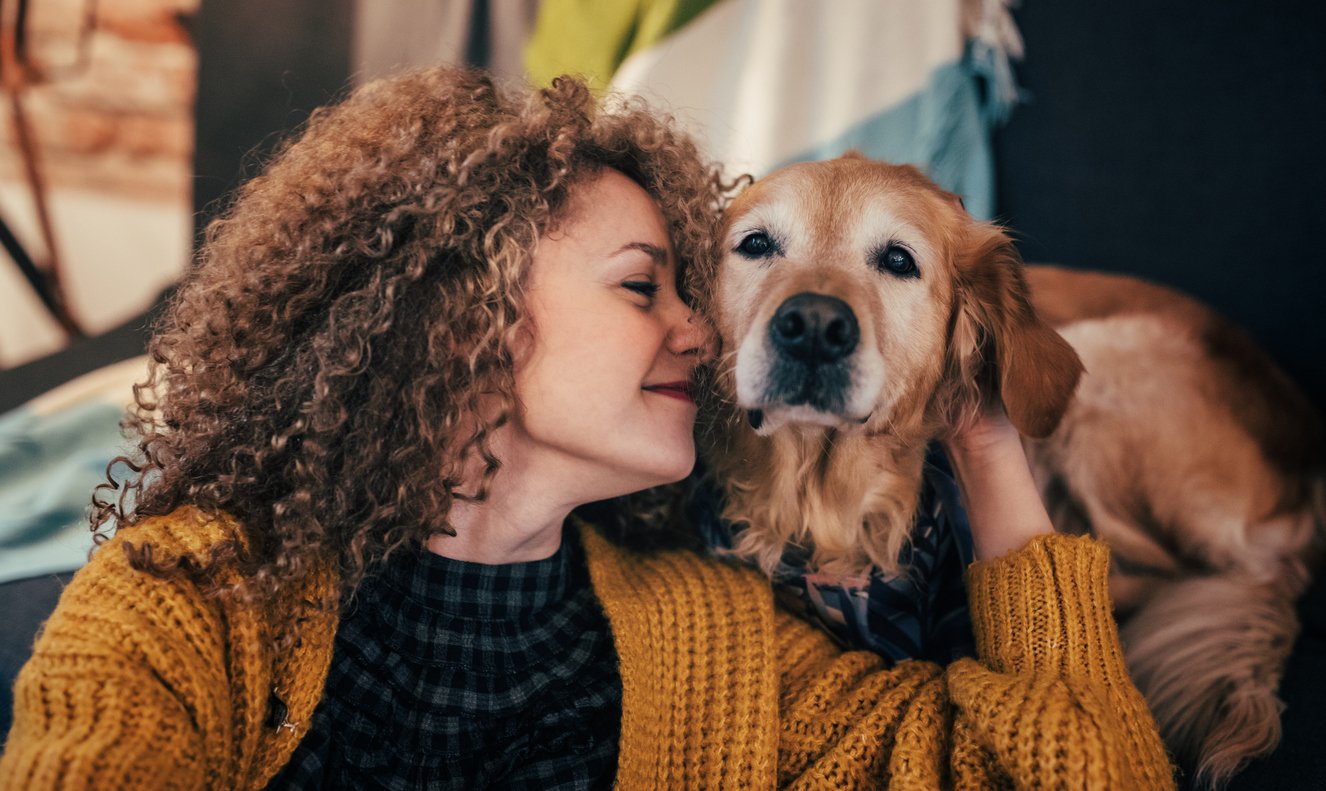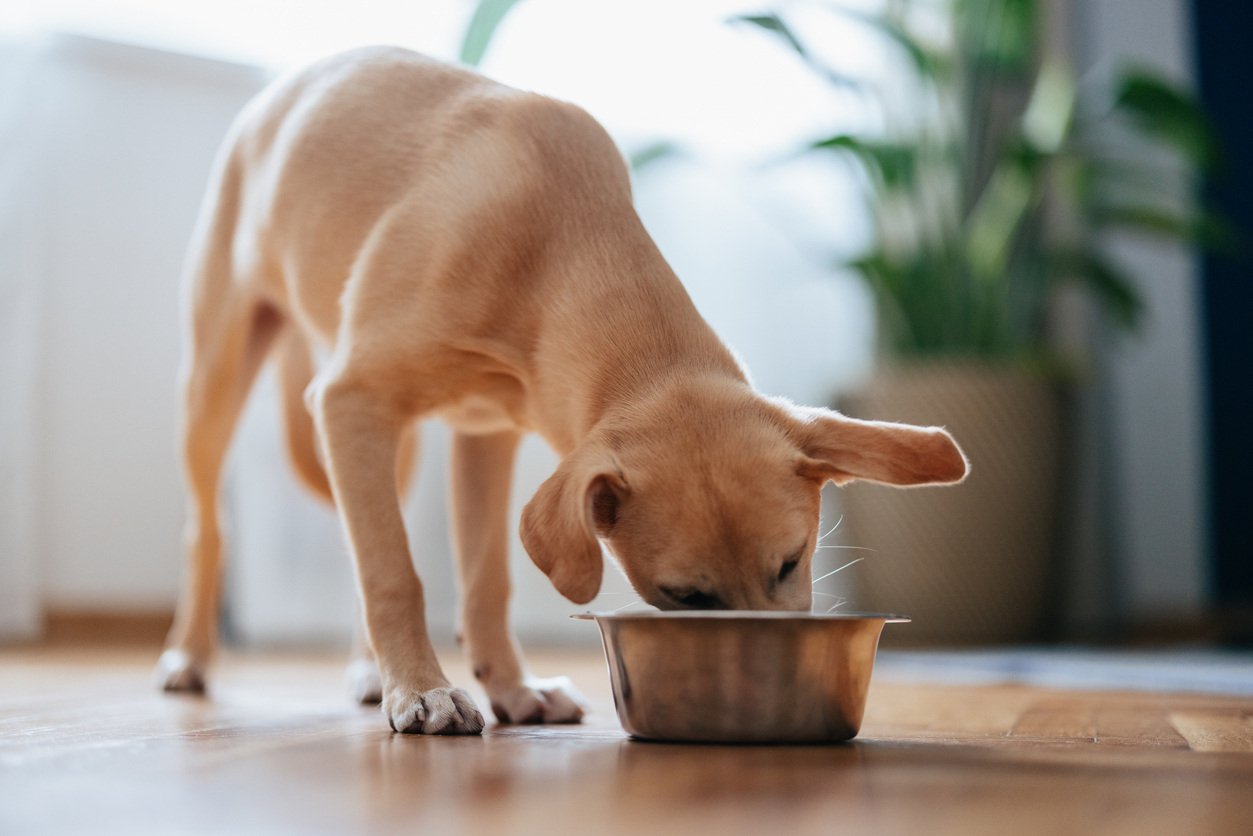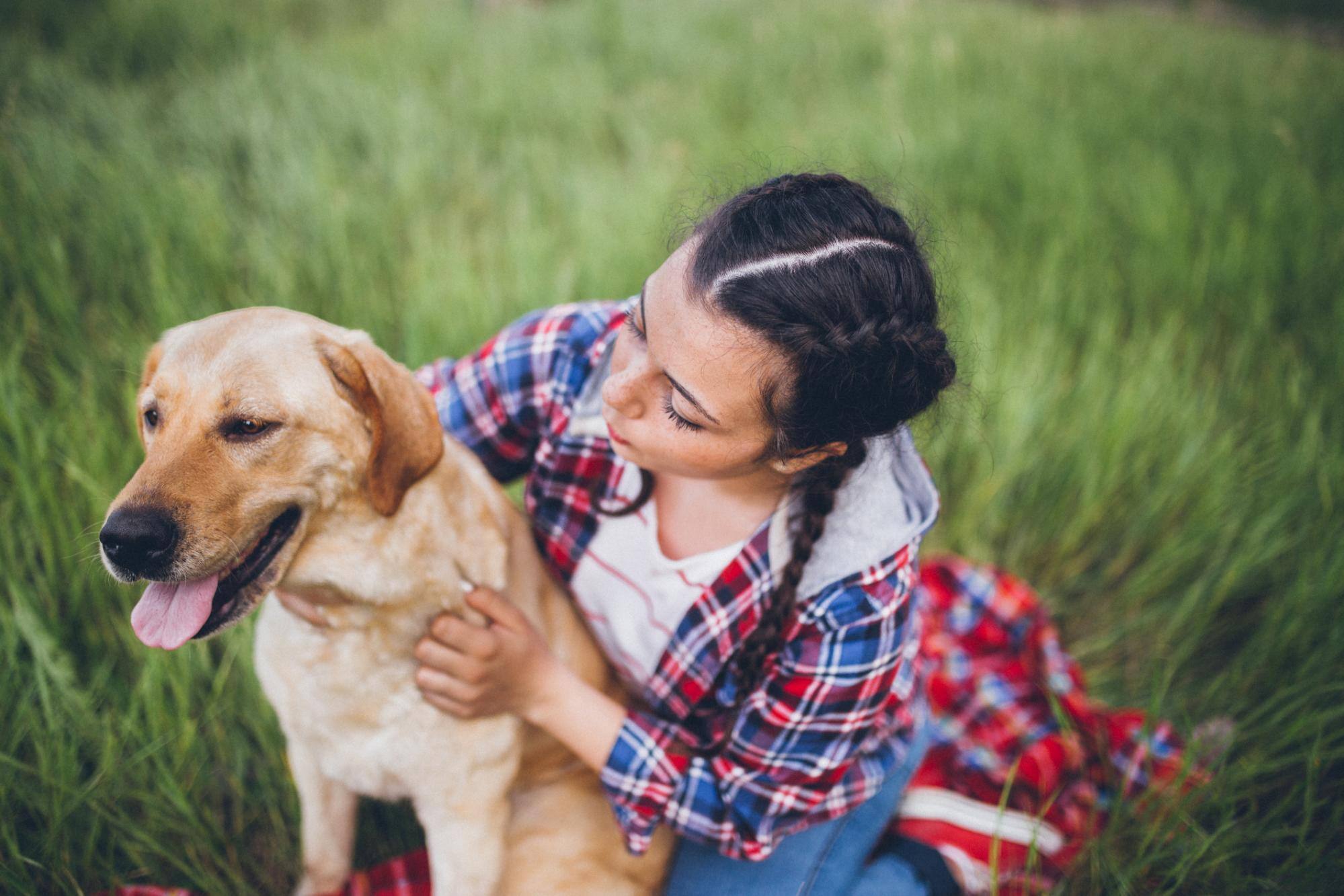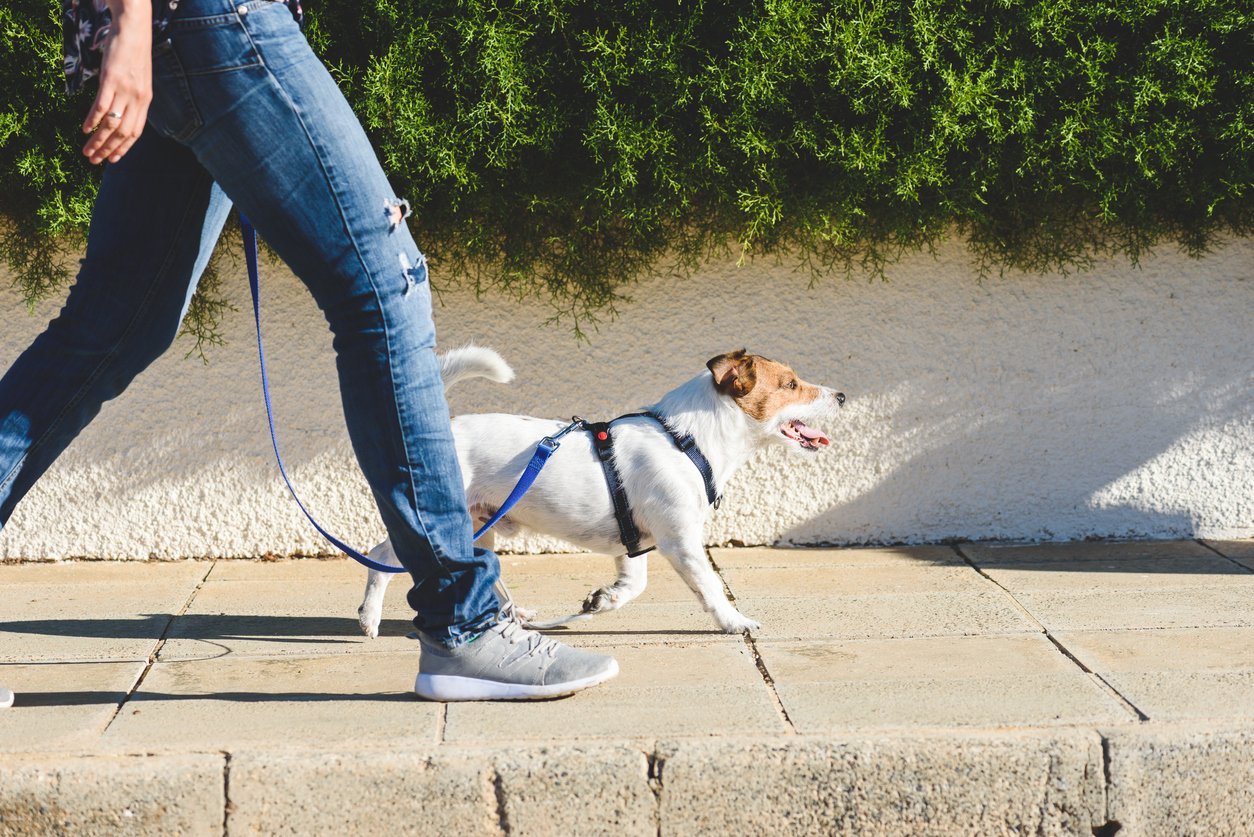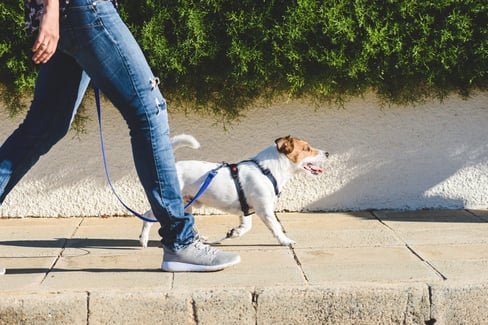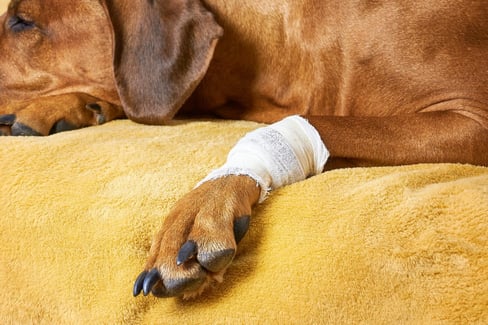Table of Contents
If your dog is getting older, you know that you can feel more vigilant about your pooch’s health. You’ll notice every time they get up with legs stiffer than usual, eat their meals a bit slower, or sleep a bit longer.
And, if you have experienced this, you know the fear of an old dog back legs collapsing.
The back dog legs collapsing of an old dog is no walk in the park. It can be a medical emergency. So you must know exactly what it is, how to prevent it, and what your treatment options are if it does happen to your dog.
Symptoms of Dog Pain in Back Legs
It can be hard to tell when your dog has pain in back legs. Dogs can’t come right out and say, “Hey, my legs hurt!”
But wouldn’t it be so much easier if they could?
Even without the power of human speech, there are still things dogs will do to tell you their hind legs hurt. Let’s explore some of those signs.
Limping
Limping is one of the most obvious and easiest to spot signs of hind leg back pain. Suppose your dog is walking a little bit funny because they are trying not to put weight on one (or both) or their hind legs, then you know that there’s an issue with your dog’s hind leg and that it’s sore.
There could be a variety of reasons for why your dog is limping, anything from a minor sore paw, to a fracture, to more serious medical conditions. Depending on the severity and duration of the limp, you may want to speak with your veterinarian.
Sensitive to Touch
If your pooch is suffering from sore hind legs, you may find them sensitive to your touch. Your dog may not want you to touch them; if you do, the dog may whine, cry out, or even snap or bite at you (so be careful!). This is a very common reaction to pain.
Think about it. If you had a big bruise on your leg, would you want people to poke and prod at it to see if you have a reaction that could indicate it’s painful?
Swelling
It’s not always present, but there may be swelling depending on the reason for your dog’s hind leg pain.
Swelling can happen when a dog’s been injured. For instance, if a bone has been broken or fractured. Or, it could be due to a sliver or minor injury.
The presence of swelling on its own doesn’t necessarily mean your pup has a serious injury that will require medical treatment. However, if you notice swelling in your dog, take note of it. Try to find the cause if you can because it could denote a more serious issue, including potentially a tumour that you will want your vet to look at.
Cuts / Marks / Skin Lesions / Etc.
Any mark, cut, skin lesion, etc., can be a very obvious tell that your dog may be experiencing pain in their hind legs. Again, just like swelling, there’s a range in severity. A small cut is probably something you’ll be able to take care of yourself at home. But rashes won’t go away, skin lesions you don’t know why they’re appearing, injuries that appear infected, deep wounds, etc. These issues should be checked over and looked after by a vet.
Causes of Dog Sudden Lameness in Hind Legs
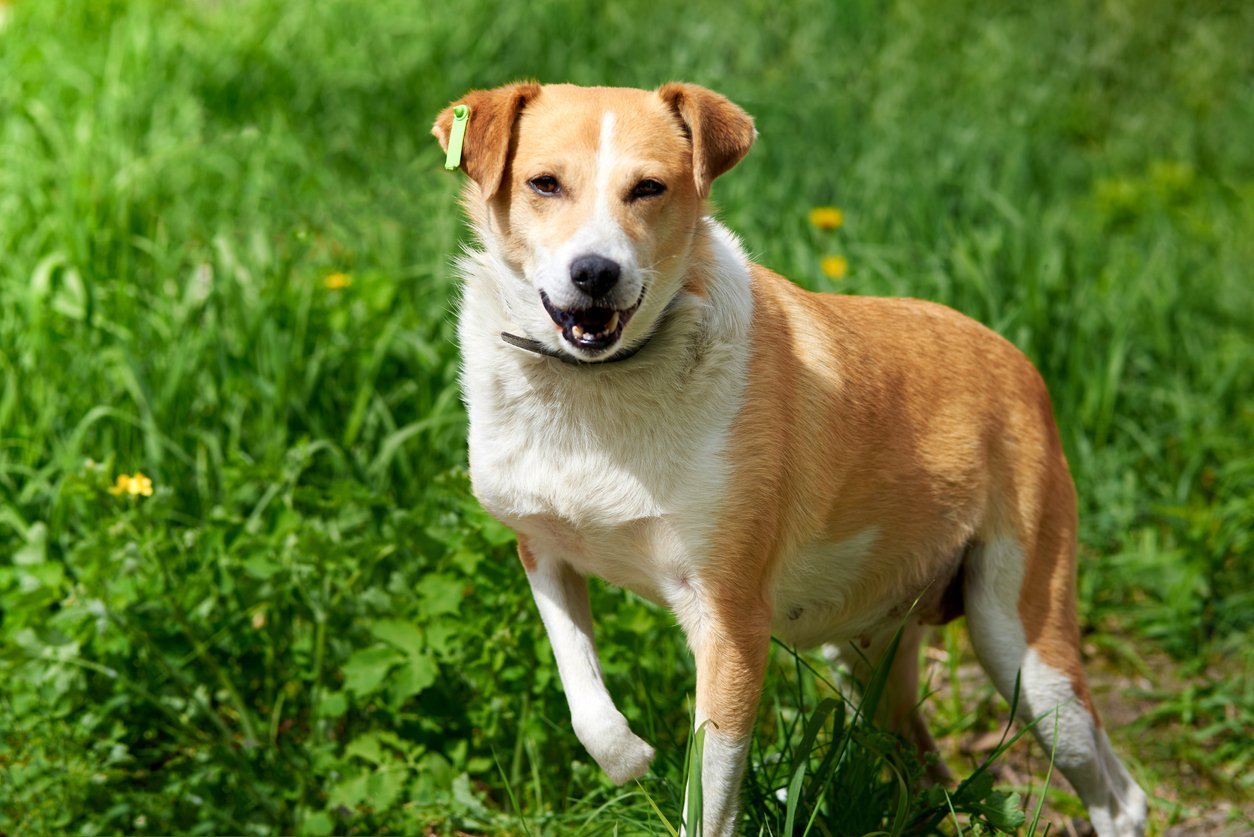
As seen in our article Lame Dog – Causes, Symptoms & Prevention of Canine Lameness, lameness in dogs is defined as when one or more limbs on your pup aren’t working properly. With lameness in the hind legs, this is narrowed to referring to one of the hind limbs on your dog not working properly. This can manifest itself in some of those symptoms of hind leg pain previously discussed, like
- Limping
- Sensitive to touch
- Swelling
- Cuts/marks/skin lesions/etc.
A dog’s hind legs collapsing can happen quite suddenly. Or it can develop gradually which can lead to your dog struggling to stand up or walk across the room. Regardless, It can be very scary. Of course, you want to know what’s up with your dog and if your dog is okay.
And the unfortunate answer to that question is that it might depend on why your dog has sudden lameness in the hind legs. It might be something as simple as a sore paw, or it could be more serious. Some more serious causes could be
- Injury
- Arthritis
- Hip dysplasia
- Seizures
- Diseases
Injury
If your dog has an injury in their hind legs, they might experience sudden lameness. Some examples of injuries that could cause this issue are:
- Broken bones: Just like when people break their legs, dogs will avoid walking on their hind legs if they’ve broken them. And if your dog has broken a leg, make sure you take them to the vet so that the leg can be set and care is taken to ensure the leg heals properly.
- Torn ACL: As described in our article Comprehensive Guide on Dog ACL [Prevention Tips Included], the ACL is a ligament in a dog’s knee. Injury to this ligament can be either chronic or acute. Either way, the injury can result in lameness in the affected leg.
- Luxating patellas: A dislocated patella (kneecap) is more common in smaller dogs and can cause lameness in the affected hind leg. It should only hurt your dog when it’s popping out of the joint, not once it’s already dislocated.
Arthritis
Arthritis is not a medical condition unique to humans. Your pup can be afflicted by it, too. And just like with humans, it’s much more common in older dogs than your bouncy, year-old puppy (although there are things you can do with your puppy to help prevent arthritis as the dog ages – but more on that later).
It happens when the cartilage and fluid cushioning the bones in your dog’s joints wears away, so the bones are left grinding on each other.
This can be as painful as it sounds.
So, if your dog has hind legs affected by arthritis, they may move a bit stiffly or try to keep weight off the affected legs, which will result in lameness.
For more information on dog arthritis, check out our guide Understanding Dog Arthritis – Symptoms, Causes, Preventions, Q&A.
Hip Dysplasia
Hip dysplasia, as described in our article Hip Dysplasia Dogs – Top Prevention & Treatment Tips, is when the ball and socket that make up the hip joint don’t grow uniformly, causing the joint to not fit together properly (it’s ‘loose’). It’s particularly common in large and giant dog breeds, like German shepherds and golden retrievers.
This condition has different severities, depending on the discrepancy in size between the ball and socket.
Once the problem has developed, there’s no quick fix for this issue. If treatment to fix the joint is required, it will likely need to be surgery. While it’s always great to adopt, it can be difficult to know the family history, so this potential risk is something to keep in mind.
If you’re purchasing from a breeder, make sure to inquire about the dog’s family history of hip health and whether or not the breeder offers hip certifications.
Seizures
Seizures can be a serious medical condition foretold by the collapse of your dog’s hind legs (or the collapse of your dog in general). Other signs your dog is having a seizure are
- Your dog has lost consciousness
- Your dog is twitching or convulsing
- Your dog is drooling, chewing, and/or foaming at the mouth
- Your dog has lost control of their bladder and bowels
If your dog has a seizure, you’ll want to be careful about overheating, so Fetch by WebMD recommends turning on a fan or putting cold water on your pooch’s paws if a seizure is going on for several minutes.
A dog that’s had a seizure will need to be taken to the vet for an examination. Seizures may result from epilepsy or a serious underlying medical condition, which your vet should be able to identify so your dog can receive proper treatment.
Diseases
If your old dog’s back legs collapse or suddenly experience lameness, it’s also possible that it’s due to an underlying disease.
We’ve outlined just three of those diseases in the table below:
| Disease | Description |
| Degenerative Myelopathy (DM) | This is a degenerative disease that affects the spine and will progress to cause paralysis in affected dogs’ hind legs |
| Certain Cancers | Could affect the motor function of your dogs’ hind legs, particularly if cancer (or tumours) are localized in the hind legs |
| Intervertebral Disc Disease (IVDD) | This medical condition affects the spine and can cause paralysis in a dog’s hind legs (or even all four legs depending on the area of the spine affected) |
As you’ll note in this table, diseases (and injuries) that affect the spine cause a particular risk of lameness or old dog back legs collapsing.
4 Ways to Prevent Old Dog Back Legs Collapse
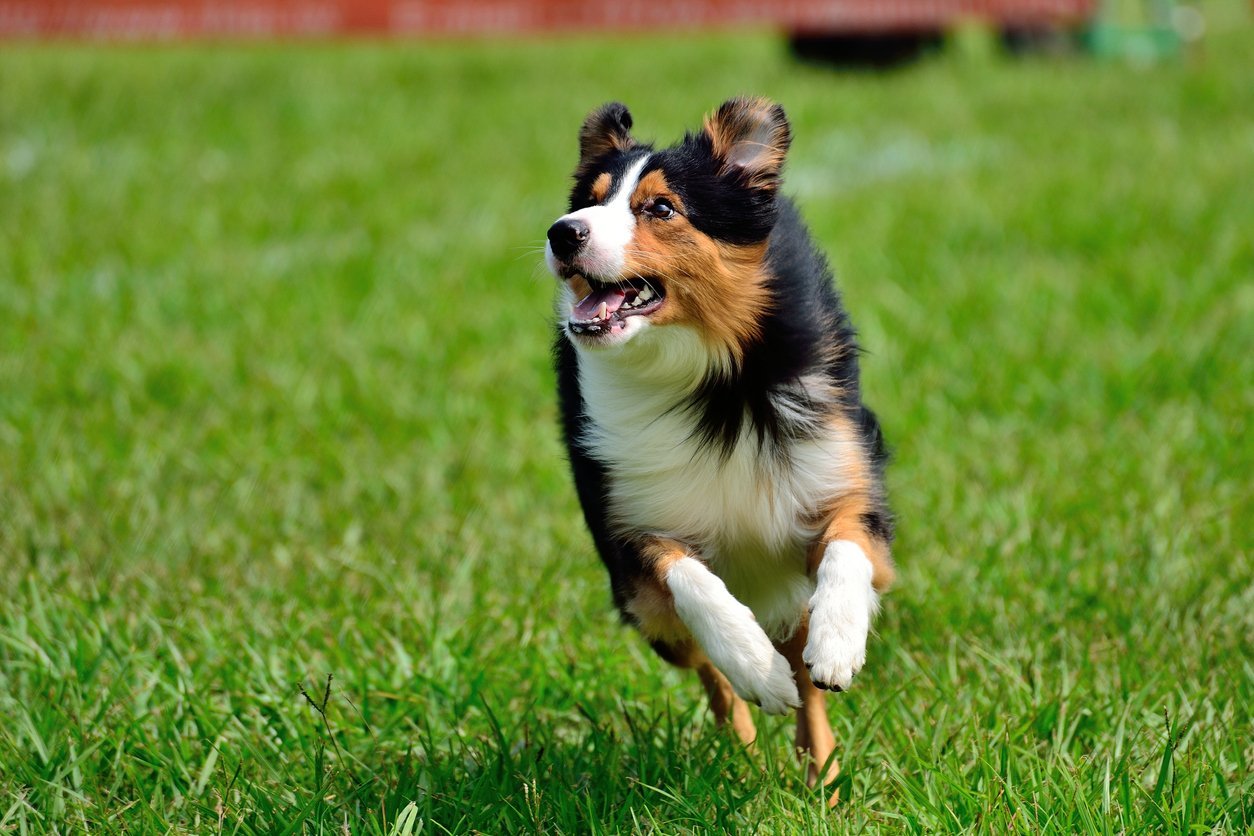
You will not 100% be able to prevent every possible issue that could ever happen to your dog, including old dog back legs collapse. However, there are ways you can help prevent the type of medical issue that causes old dog back legs collapsing and keep your pet healthy and mobile.
And in fact, the way to prevent old dog back legs from collapsing is to keep your pet healthy. Four ways you can do that are
- Supplements
- A healthy diet
- Regular, steady exercise
- Proper rest from exercise
1. Supplements
Providing your pet with supplements can be a great way to ensure your pets get an extra dose of vitamins and nutrients to keep them healthy and mobile and keep them from having old dog back legs collapsing. Your dogs are no different.
There are different types of supplements your dogs can take that’ll target different issues.
For instance, you can give your dog joint supplements, like our TRI-ACTA for pets and TRI-ACTA H.A. for pets. These supplements can help improve joints for dogs already experiencing mobility issues or prevent issues like arthritis from developing in the future.
Our TRI-ACTA joint supplements include ingredients like
- Glucosamine
- MSM
- Chondroitin
- Hyaluronic acid
All of which can help repair and rebuild cartilage and/or lubricate joints to strengthen joints.
Other supplements include things like probiotics or target things like fur and coat, different organs, etc.
TRI-ACTA H.A. for Pets
Our maximum strength formula is optimally designed to accelerate the formation of cartilage, minimize inflammation, expedite the healing process, and improve joint conditions.
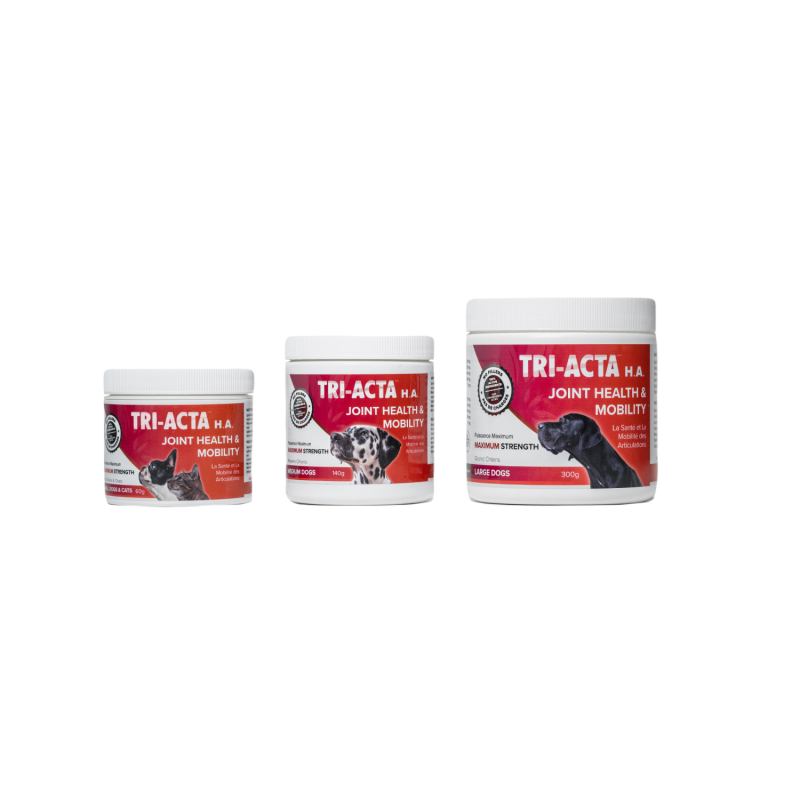
2. A Healthy Diet
A healthy diet will help keep your dog healthy and strong. Making sure your pets get the proper nutrients from their meals will help keep them as healthy as they can be. And the healthier you can keep your pup, the less likely it is to suffer from an issue that could cause their back dog legs to collapse in older age.
You might be thinking that you can ensure they have a healthy diet by simply giving them dog food, but that’s not necessarily true. Not all dog foods are made equally.
Instead, you’ll need to research the best dog food for your dog. You can have a headstart using our blog post Top 10 Best Canadian Natural Dog Food & Supplements.
3. Regular, Steady Exercise
Just like regular exercise is good for us; it’s good for your dogs. Making sure your dog has regular access to physical activity, like taking daily walks, is an important part of keeping your pooch healthy. Keeping your pet mobile will also make sure your pet stays mobile.
What we mean by this is that by regularly letting your dog exercise, your dog is more likely to maintain his/her ability to move around, even as he/she ages.
However, we prefixed this with regular, STEADY exercise because you also don’t want to overwork or overexert your dog. This can have a negative impact on your dog’s health, including increasing the risk of injury, like one that could cause issues with your dog’s hind legs.
Which leads right into our next point…
4. Proper Rest from Exercise
Just like exercising is important, so is resting and sleeping. After your dog has had a bout of physical activity, make sure they are also able to take the appropriate rest. You’ll also want to ensure they have access to water.
Different types of dogs (like breeds, ages, etc.) will require different levels of exercise and, therefore, different levels of rest. What might count as intense exercise for one type of dog won’t necessarily count as such for another. Miniature dachshunds, for instance, don’t require as much exercise as a husky. And a puppy and an older dog will require more rest than a young adult dog.
Old Dog Back Legs Collapsing Treatment Options
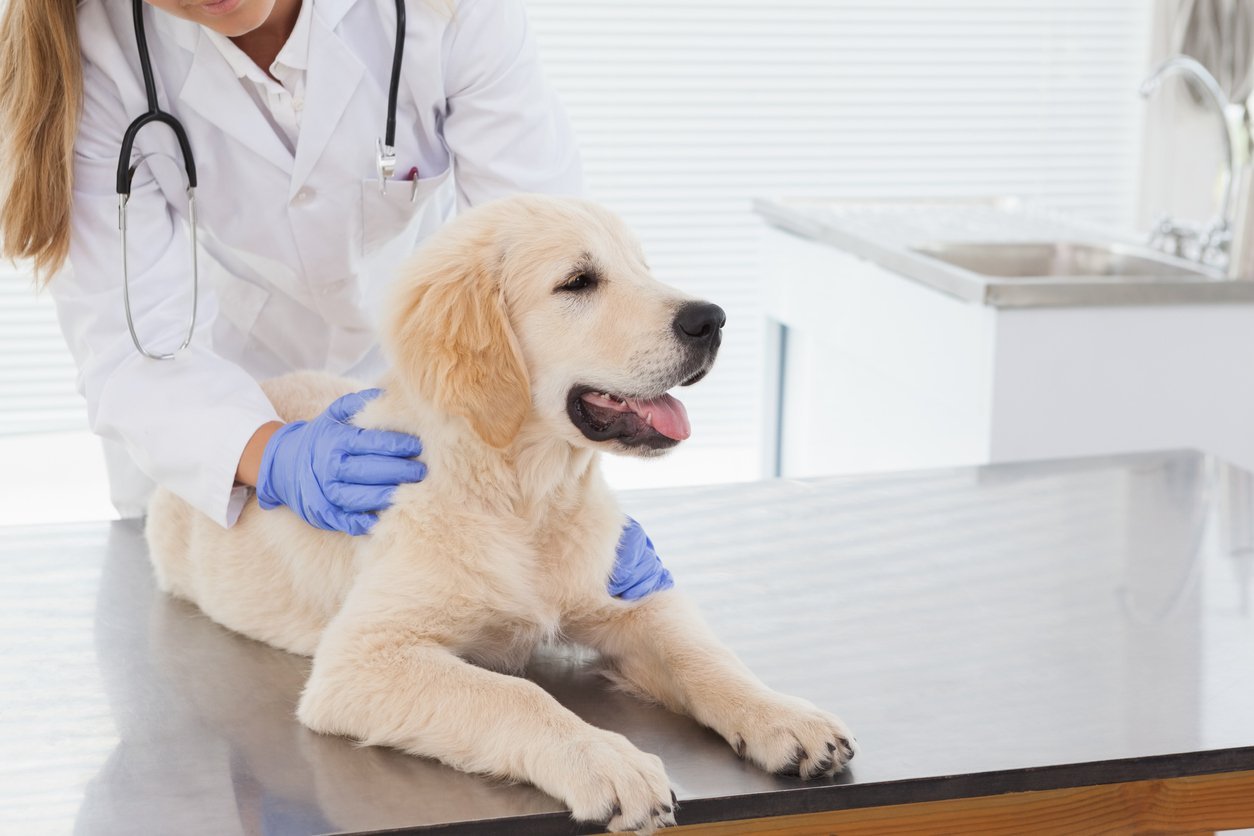
The treatment your dog will need if their back legs collapse will depend on the underlying issue that caused said collapse.
So, step 1 is always to see your vet.
From there, treatment options can vary.
See Your Vet
If your dog is having serious health issues, like back legs collapsing, then it’s time to make a visit to the vet. Your vet will be able to evaluate your dog’s legs and identify the problem. From there, proper medical attention and treatment options can be used.
Injury
The treatment options for your pet depend on the injury, but depending on the severity, it will often require surgery. For instance,
- Broken bones: Treatment can include wrapping the limb or surgery
- Torn ACL: Treatment will often require surgery
- Luxating patellas: Treatment options can include different types of surgery. However, depending on the severity of the injury, it may not be necessary.
Arthritis
Arthritis is not necessarily an issue that can be healed with things like surgery. Instead, treatment is about managing symptoms and trying to build cartilage back up if possible. As listed in our previously cited article on Understanding Arthritis, it can be treated with:
- Joint supplements, like TRI-ACTA H.A. can help prevent further breakdown of the cartilage in joints and help build it back up. Plus, hyaluronic acid helps lubricate the joints.
- Pain medication, which will help manage if your dog has pain in the back legs, or anywhere else
- Exercise and weight management, which can help keep your dog more agile, as well as take pressure and weight of the joints
- Adjustments to home, which can make getting around easier for your pooch. (You can mitigate the need for jumping on the couch, for instance, by getting a stool or stairs for your small dog to use, for example.)
Hip Dysplasia
As outlined in our previously cited article about hip dysplasia in pups, there are various treatment options available, both surgical and non-surgical. Those options include
- Different types of surgery
- Joint supplements
- Pain medication
- Physiotherapy
- Hip brace
- Weight loss
Without surgery, hip dysplasia won’t be ‘healed,’ but you can still mitigate any pain and/or symptoms your dog is feeling. Surgery is typically only required once hip dysplasia has progressed more severely.
Seizures
Treatment for seizures can depend on the type of seizures, how often they happen, and the underlying cause, which is something a vet will need to look at.
However, when your dog is having a seizure, try to make sure they are as comfortable as possible, safe, and cool. Once the seizure is done, especially if it was long or your dog has had multiple, take your dog to see the vet for that examination.
Your vet may prescribe medication for your pooch, which your pet may be on for life.
Diseases
Different diseases will have different treatment options. Treatment options for the three diseases we’d previously listed are outlined in the table below.
| Disease | Treatment Options |
| Degenerative Myelopathy (DM) | According to VCA Animal Hospitals, DM has no cure; however, things like exercise, physiotherapy, a healthy diet, etc. can help keep your pet on their feet for longer |
| Certain Cancers | Treatment for cancer will depend on the type (some being incurable). However, treatment for cancers in dogs can include surgery, radiation, and chemotherapy (just like in humans) |
| Intervertebral Disc Disease (IVDD) | Treatment can include surgery, pain medication, etc |
Q&A
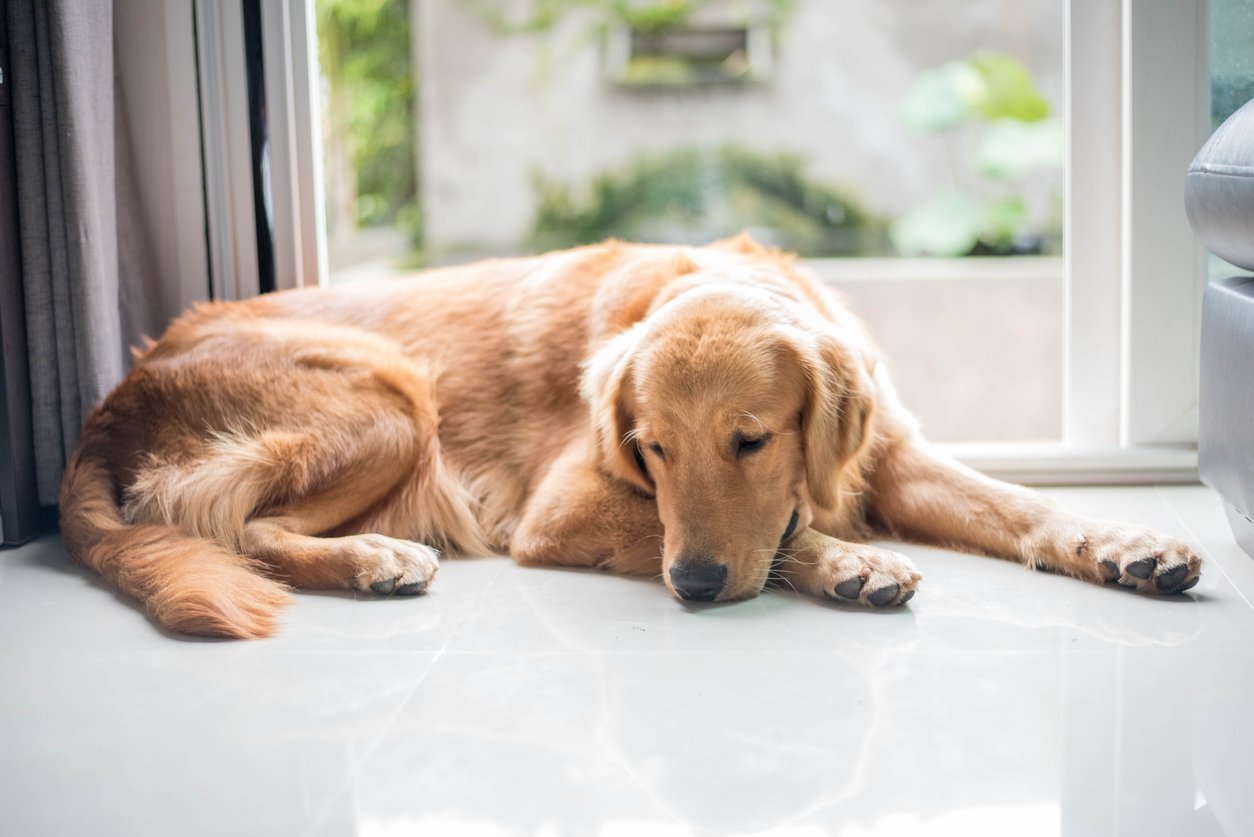
What to do when a dog can’t put weight on their back legs?
If your dog can’t put weight on its back legs, it’s time for you to see your vet so they can evaluate the problem.
If it’s safe to do so, you can try and evaluate your dog yourself before you go to see if you can tell what the issue may be (fractures, for instance). However, pain in both back dog legs, especially to the point where your dog can’t walk, may speak to a larger issue that you’ll need a vet’s professional opinion to diagnose.
Not to mention, if your dog is feeling cornered and in pain, they may lash out at you, so be careful when approaching your pet, either to check for injury or to bring them the vet’s.
How can I help my dog with weak back legs?
Other than going to the vet and following through with the provided treatment plan, you can also begin exercising your dog (if possible), ensuring your dog is eating a proper diet, and giving your dog supplements.
Check with your vet to ensure you’re doing these things in a way that will help rather than inhibit your dog’s treatment plan.
In Summary
It can be scary when your old dog’s health begins to decline. And scarier still when that decline can seemingly happen suddenly, like when your old dog back legs collapse. But, you can rest assured knowing there are things you can do to prevent this from happening, like:
- Supplements
- A healthy diet
- Regular, steady exercise
- Proper rest from exercise
And treatment options if it does happen, which begin with a trip to the vet.
If you want to start your dog on the right track for optimal joint health, shop our pet supplements. And to learn more about how you can look after your dog’s health, check out our resources.
TRI-ACTA for Pets
A proactive approach for developing and younger adult pets to maintain optimal joint health mobility, minimize inflammation and fend off age-related ailments.
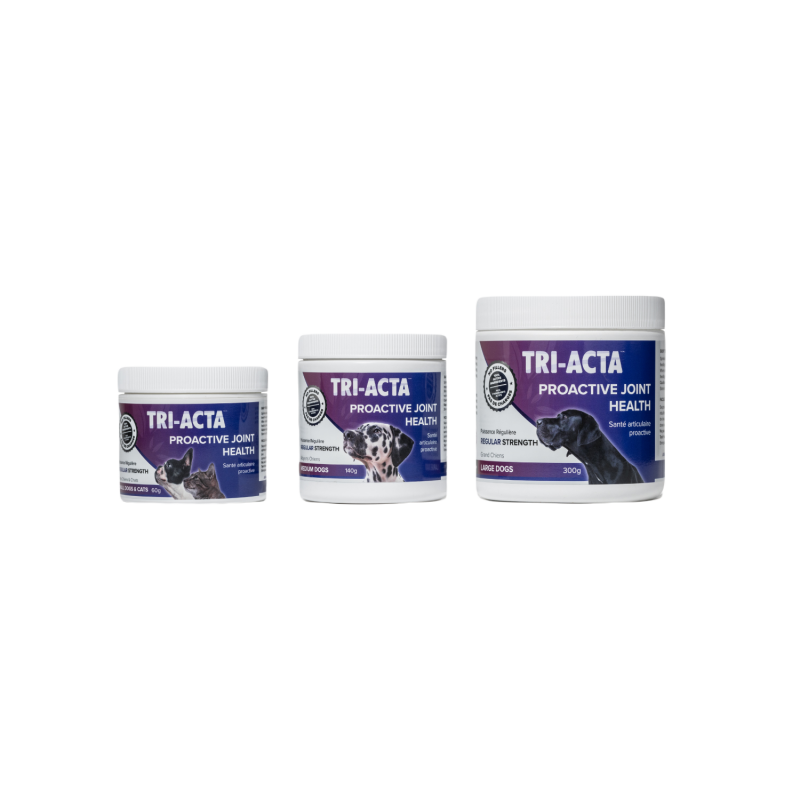
Newsletter Signup
Subscribe to our newsletter to receive the latest news and exclusive offers.
.jpg?height=2000&name=Cliick_Integricare-DISPLAY-REVISEDV2%20(1).jpg)
Proactive & Therapeutic Joint Supplements
When given daily, Integricare joint supplements recover bone and joint injuries faster and help prevent mobility injuries from happening in the first place.

